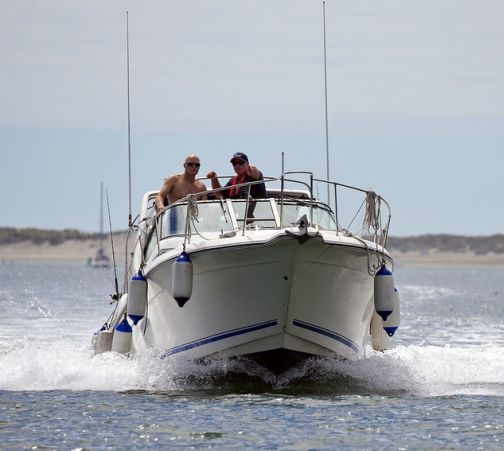Used power boats, pre-owned boats, yachts with experience! Whatever you call it, they are boats that somebody else had before. We all have the doubts and nightmares of buying “used” and getting someone else’s mess. In reality, used power boats for sale can be a perfect deal—if you know what to search for and what to miss! This report can help you separate out the lemons so that you end up with a plum!
A pre-owned boat can provide you and your family loads of enjoyment out on the water. The right boat can cruise, fish, ski, tube and do anything you would like—approximately as good as a new boat. Moreover, it will cost you less money, making it a good investment.
Right now, it is a very good time to be finding out a used boat. More new powerboats were sold in the late 1990’s and 2000’s than in any other era in history. Many of these boats are now sold again. The marketplace has many “used” boats present at good prices and they still have a high value. If you are ready, it is a great time to buy a boat!

Aside from getting a good price you can also find used boats that were properly made and can still perform impeccably well. Fiberglass almost lasts forever; the engines are used less than half the year and good care can keep the interiors like a new one. The right used boat can be a great way to get out outdoors and enjoy the scenery.
While checking out a used boat (http://www.wikihow.com/Buy-a-Used-Boat) look for signs of overall maintenance. Even life jackets, lines, and fenders could be clues to how much care, the boat has got. Here is a list of other things to look for. When in doubt, call in a professional.
1. Find the cracks in the fiberglass above and below the waterline
Dinky cracks, for example spider webs in localized areas, are mostly cosmetic. They seem to appear near screws that has not been countersunk properly around windshields, handles and gunwales. Not a problem, but they may get worse if not fixed.
Cracks greater than 2 inches long show larger problems underneath. Ask whether the boat has been in a collision and search for signs, such as gel coat patches, that implies extensive repairs. Get an expert to test the boat.
2. Inspect for signs of damage
Mold, moisture, flexing and cracking in fiberglass and wooden areas, such as the hull, transom, and floor? These can show rot, the breakdown of fiberglass, de-lamination of plywood, or even rot in the stringers. You’ll likely wish to walk.
3. Find the loose seats
The floor may be rotten or not good, or it can simply be that the bolts are stripped. The marina can easily fix the above issue.
4. Look for mildew
Do the carpet, seat, or boat top has mildew and other damage (you must check the storage lockers too)? Covers and Upholstery can be cleaned or replaced, but extensive mold under the seats is a not a good sign. Also, mold spreads easily, so spores on these surfaces, may be in the wooden parts as well; a moldy carpet can define problems underneath.
5. Make sure the electronics work
Damaged bulbs and seized bilge pumps have cheap solutions.
Different devices on the fritz, could show faulty wiring or a faulty battery, again, not a huge deal. But you need to see if the labels on the engine have peeled, signs of engine overheating and trouble or if insulation on the wires has melted.
6. Check the belts
Is the alternator or power-steering belts cracked, thin or worn out? Belts must be changed every hundred hours.
7. Check the engine
Does the engine start rough or slip, makes excessive noise, vibrates , or smokes? Old gas or excessive oil is fixed easily during your first tune-up. But, these symptoms can indicate a bigger problem, such as low compression in the cylinders, indicating a costly engine overhaul.
8. Test the oil
Is the engine oil feeling gritty between your fingers? Grit is the metal filings, which can indicate serious engine wear. If a mechanic confirms, abandon ship.
If there’s milky oil in the engine or lower unit, this means water is getting in. A bent prop shaft can be straightened and a blown or worn seal replaced. But an impact causing this kind of damage may have stressed the gears or, if water got inside, the gears may be corroded then it’s a bad news.